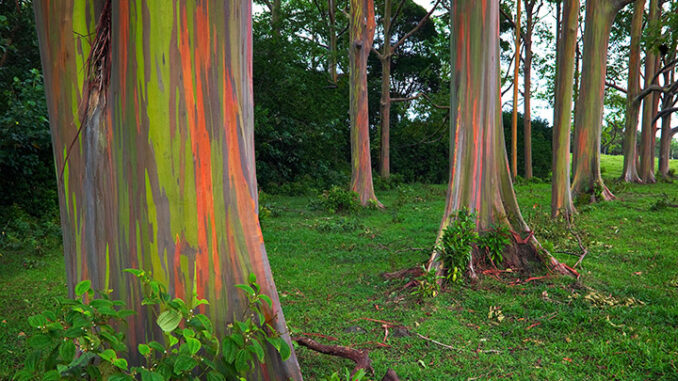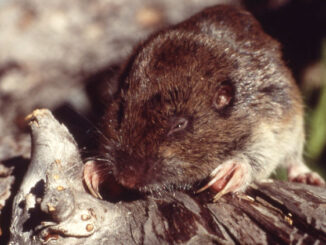
Are you wondering what happened to these trees? No—they haven’t been painted. This is the rainbow eucalyptus tree, or Mindanao gum (Eucalyptus deglupta). Its bark has natural stripes of brilliant colors.
The rainbow eucalyptus is native to the tropical forested areas of New Guinea, Indonesia, and the Philippines but has been planted in other locations with a tropical climate, including some parts of the southern United States.
The trees are slender and fast-growing. In their native environment, they can reach heights of over 76 meters (250 feet). They develop small white flowers that are high in nectar.
The colorful nature of the bark is due to the way that it sheds. The bark peels off in strips to protect the tree from other organisms that can grow on it. As it peels, it reveals stripes of green, red, orange, purple, and brown. The brown bark peels off in different places at different times. When the brown bark is first shed, it reveals bright green bark. As that bark is exposed to air, it changes colors. It becomes purple, then orange, then red, then yellow, and finally brown again before the shedding repeats. This means that the bark is continually changing in a kaleidoscope of colors.
The rainbow eucalyptus is used as an ornamental tree in some areas like Hawaii and south Florida. It also has some known medicinal properties. The main commercial use of this colorful tree, though, is rather surprising. It is used as the main ingredient in white paper.
Before you plant one of these colorful trees, check the restrictions in your area. Experts warn that in some areas, the rainbow eucalyptus is likely to become an invasive species [a nonnative organism that causes harm to the environment, human health, or the economy].
What Do You Think? In what other ways are rainbow eucalyptus trees different from most trees? Research and create art to share your findings.
Photo Credit: ETrayne04/Alamy Stock Photo



